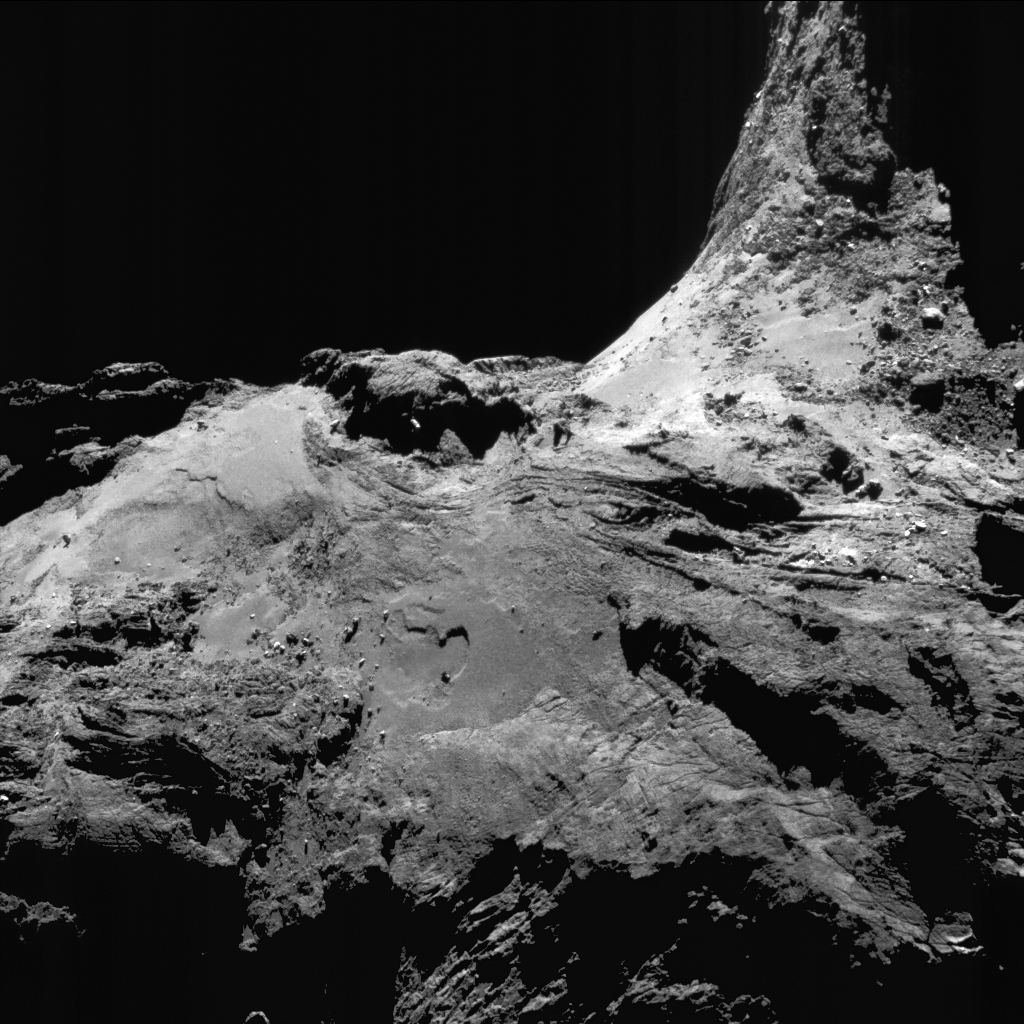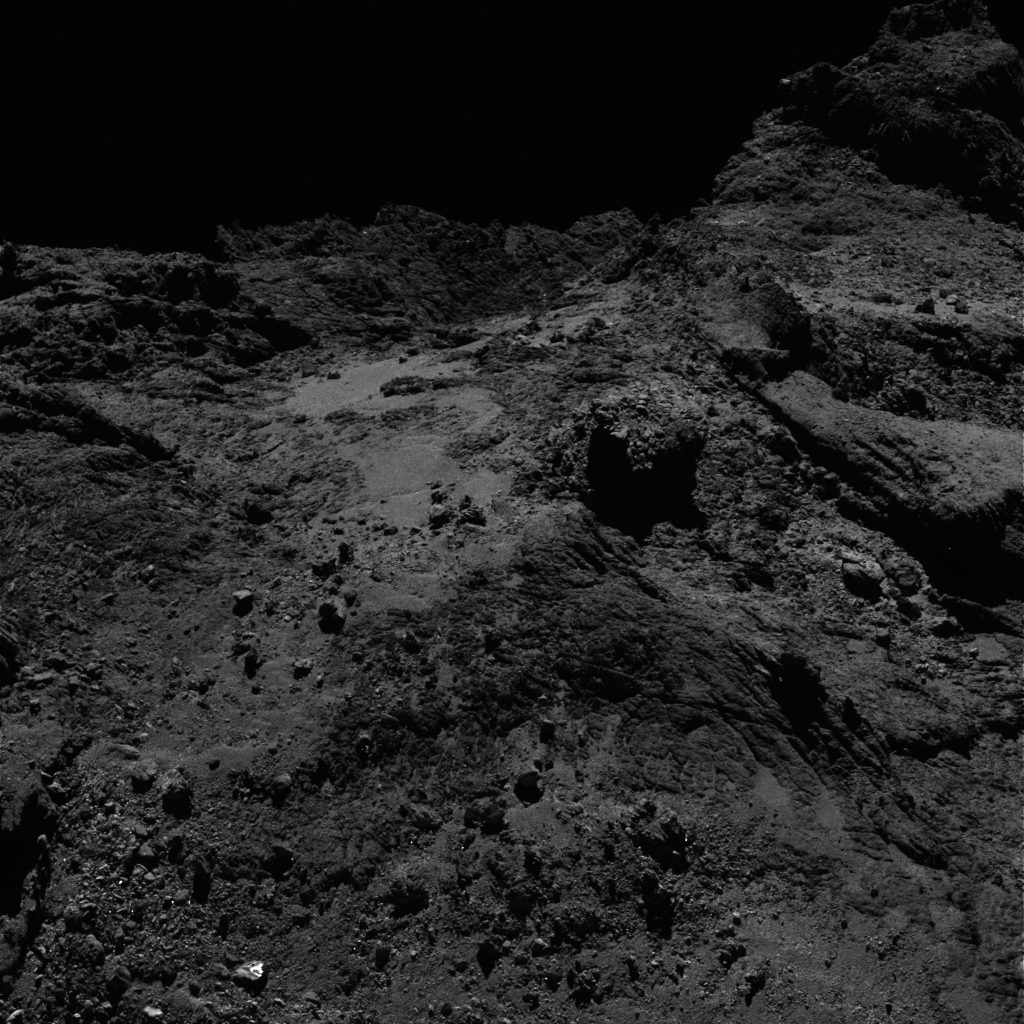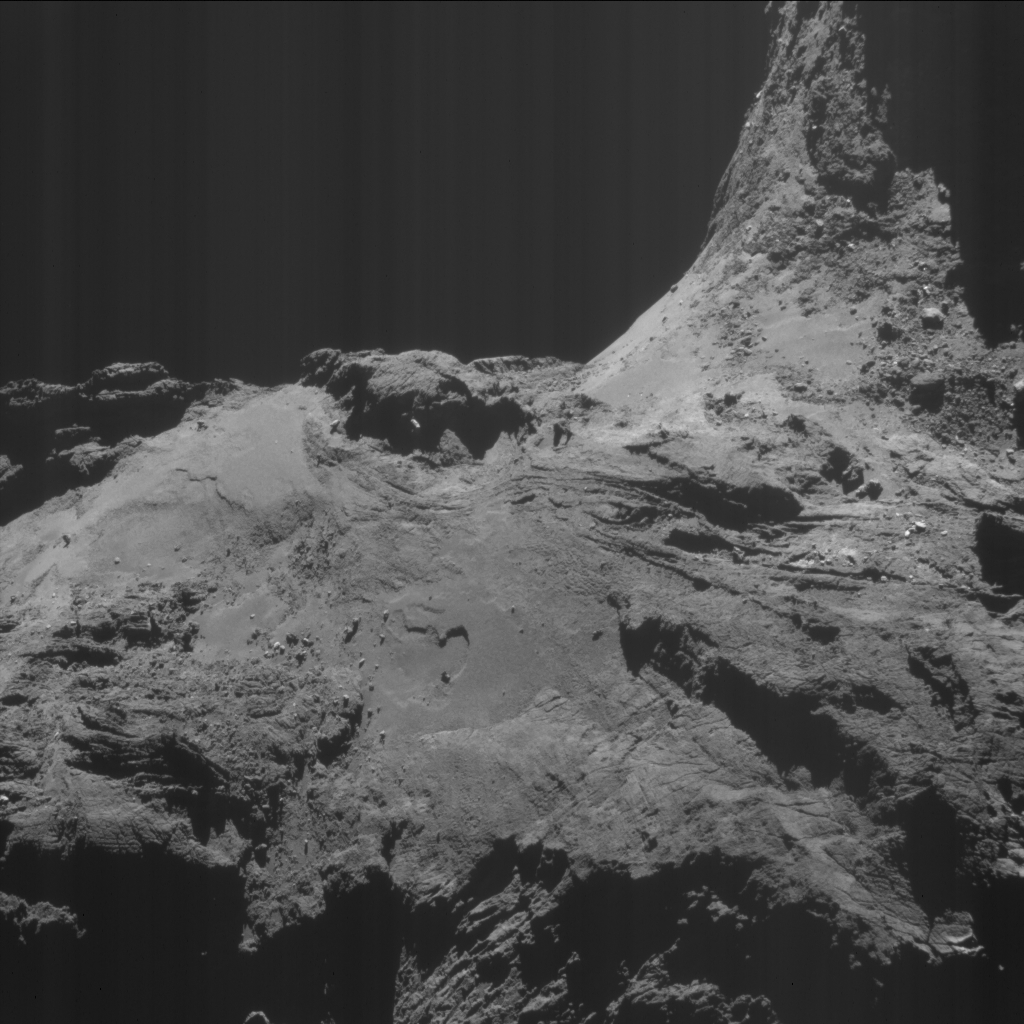This week’s CometWatch image was taken with Rosetta’s NAVCAM on 25 June 2016, when the spacecraft was 16.7 km from the nucleus of Comet 67P/Churyumov-Gerasimenko.

Enhanced NAVCAM image of Comet 67P/C-G taken on 25 June 2016, 16.7 km from the nucleus. The scale is 1.4 m/pixel and the image measures 1.5 km across. Credits: ESA/Rosetta/NAVCAM – CC BY-SA IGO 3.0
The image shows a portion of the large comet lobe, with the neck region and a hint of the small lobe on the upper right.
Dominated by the smooth terrains of Anubis, on the large lobe, this scene reveals the many boulders scattered across this region, as well as a number of surface features visible in the dust cover. A similar view of this area, taken from a comparable distance but different perspective, was featured in CometWatch 1 May.
In the central left portion of the image, towards the upper edge of the nucleus, some elevated, shadow-casting structures mark the boundary between Anubis and Seth. Parts of the more complex Atum region are visible in the bottom part of the image, exhibiting a number of linear features especially towards the lower right corner, close to the boundary with the neighbouring Geb region.
On the upper right, along the neck, the smooth region of Hapi, covered in dust and plenty of boulders, guides the eye towards the rougher Anuket, partly cast in shadow.
Another image, taken on the same day with Rosetta’s OSIRIS narrow-angle camera, shows a detailed view of an entirely different portion of the large comet lobe, at the meeting point between the regions of Khepry (upper left), Imhotep (right) and Bes (bottom).

OSIRIS narrow-angle camera image taken on 25 June 2016, when Rosetta was 17.9 km from Comet 67P/C-G. The scale is 0.31 m/pixel and the image measures about 630 m. Credits: ESA/Rosetta/MPS for OSIRIS Team MPS/UPD/LAM/IAA/SSO/INTA/UPM/DASP/IDA
The original NAVCAM image is provided below.










Discussion: 4 comments
Hi Emily,
This image is a good context image for several of the areas that both A. Cooper and I have been studying (and found) changes in. Labelled the image in the following link.
https://marcoparigi.blogspot.com.au/2016/07/new-nav-cam-image-of-anuket-and-anubis.html
I am sure that it is just a matter of time that we find more changes and are able to explain them in context to our overall theories on comet evolution over time.
Unable to understand general surface without internal meteorology and vibration considerations. As important as thermal scenarios.
Beautiful shot! Lots of surface ‘coffee percolating’ and ‘sand on the drum’ clues.
https://planetgate.mps.mpg.de:8114/Image_of_the_Day/public/OSIRIS_IofD_2016-07-08.html
We are now at 20cm/pixel at OSIRIS. Ducky starting to regain its winter coat. Don’t expect a mirror clean Philae at some shot.
Low Land ponds are places where heat can plausibly sink.
Think of after-dusk, will hyper-cold flows arriving from the higher lands and walls, all around pond’s periphery.
On the accumulating process it progressively increases pressure at bottom of ‘gas lake’.
That increasing pressure sinks -by trailing down- part of the day’s heat still present at surface of the pond.
Polishing, a little at a time.